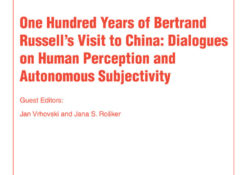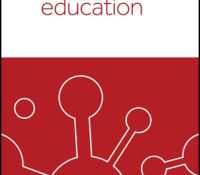
tandfonline.com har udgivet en rapport under søgningen “Teacher Education Mathematics”: ABSTRACT ABSTRACT Evidence indicates that children’s personalities shape their interactions and relationships with others. This study aims to identify the relationship between child personality types and interaction quality in preschools, which is of high predictive importance for the development of children’s competencies. Interaction quality was determined using the Individualized Classroom Assessment Scoring System (inCLASS) in a sample of 181 children attending 61 preschools in Austria. After including control variables, our results indicated that children characterised as ‘overcontrollers’ and ‘undercontrollers’ had significantly less peer interactions, compared to ‘resilients’. Furthermore, ‘undercontrollers’ tended to show less task orientation than ‘resilients’ and had more conflict interactions than ‘overcontrollers’. Consideration of child personality offers opportunities to support children in their interactions with others to improve… Continue Reading →
Like this:
Like Loading...
tandfonline.com har udgivet en rapport under søgningen “Teacher Education Mathematics”: ABSTRACT ABSTRACT Feedback is dependent on how it is interpreted and used. The present study aimed to explore Swedish primary-school teachers’ and students’ shared concerns regarding classroom feedback interaction. 13 teachers and 23 students (7–9 years old) were interviewed. A grounded theory design was employed for coding and analysis. According to the findings, teachers’ and students’ mutual main concern was to construct clarity regarding what the other communicated. Both strived to construct clarity concerning conditions that they had to adapt to, from aspects as trustworthiness and understanding. The study contributes with an illustration of the relational aspect of classroom feedback in primary school. Link til kilde
Like this:
Like Loading...
tandfonline.com har udgivet en rapport under søgningen “Teacher Education Mathematics”: Link til kilde
Like this:
Like Loading...
tandfonline.com har udgivet en rapport under søgningen “Teacher Education Mathematics”: ABSTRACT ABSTRACT This study focuses on teachers’ group decision making during Dutch allocation meetings. A previous interview study showed that teachers question the objectivity of decisions due to negative interaction experiences and a lack of structure during these meetings. To characterize the structure and interaction of these meetings, 33 student allocations were observed. Results showed a variety of structures and interactions, including differences in the degree to which the meetings met criteria relevant to achieving objective allocation decisions. It can be concluded that – based on the criteria of acceptance, fairness, and transparency as used in this study – allocation meetings need to be well-prepared and substantiated, to allow for every teacher’s opinion to be heard, and follow a procedure… Continue Reading →
Like this:
Like Loading...
tandfonline.com har udgivet en rapport under søgningen “Teacher Education Mathematics”: ABSTRACT ABSTRACT In vocational education, the learning content is often considered as concrete and specific, and the vocational learning involves physical work and interactions between participants and artefacts. Furthermore, one teacher has the overall responsibility for several students during classes in the vocational workshop at school, which means that the teacher has limited time for every single student and that the few minutes they meet become very important. However, the documented knowledge about how vocational learning is constituted in the vocational classroom and what learning content is focused on in the interaction between teachers and students is very sparse. In this study, we focus on how the enacted object of learning and its critical aspects are made relevant, when a… Continue Reading →
Like this:
Like Loading...
tandfonline.com har udgivet en rapport under søgningen “Teacher Education Mathematics”: ABSTRACT ABSTRACT This study reports on pupils’ and teachers’ perceptions of face-to-face promotive interaction (FtFPI) in cooperative learning (CL) at two primary schools in post-war Bosnia and Herzegovina (BiH). Using mixed methods, the study asks (1) ‘To what extent are the aspects of FtFPI most likely to influence pupils’ CL group work?’ (2) ‘What are the challenges in applying pupils’ FtFPI in small CL groups?’ The findings reveal mostly positive beliefs of FtFPI influence on small CL group work. However, when it comes to pupils’ and teachers’ experiences, several challenges have been identified: (1) organisation of FtFPI, (2) planning and balancing between working on a group task and supporting peers, (3) interpersonal behaviours, and (4) supportive communication. The findings suggest… Continue Reading →
Like this:
Like Loading...
eric.ed.gov har udgivet: The Partnership for Assessment of Readiness for College and Careers (PARCC) commissioned a multi-part study to determine the viability of using the drawing response interaction on the PARCC Mathematics Assessment. This study in particular focused on students with disabilities. PARCC has over 40 interaction types on the summative assessments. Why introduce a drawing response interaction? There are several drivers to the addition of this functionality. The first is comparability. While scores across modes are comparable overall, they could be stronger at the lower grades. Students who respond to constructed response on paper can provide drawings. Feedback from students in lower grades from the mode comparability study indicated the desire for a drawing tool. Data from the scoring of paper responses indicates up to 10% of the responses… Continue Reading →
Like this:
Like Loading...
tandfonline.com har udgivet en rapport under søgningen “Teacher Education Mathematics”: Abstract Formulae display:?Mathematical formulae have been encoded as MathML and are displayed in this HTML version using MathJax in order to improve their display. Uncheck the box to turn MathJax off. This feature requires Javascript. Click on a formula to zoom. Abstract The quest to get many people into higher education often crowds out the need for quality teaching and learning achievement if not backed up by resources. Narratives of recurrent concerns in the higher education sector include maintaining access to and quality of higher education, achieving a better outcome and reduce the number of students dropping out of institution. Although successes have been achieved in terms of student access to higher education, the same cannot be said of success… Continue Reading →
Like this:
Like Loading...

tandfonline.com har udgivet en rapport under søgningen “Teacher Education Mathematics”: ABSTRACT ABSTRACT Novice–expert interaction plays an important role in teacher professional development for Chinese vocational education and training (VET). Both Chinese and international research shows that expert-teachers’ support is associated with the improvement of novice-teachers’ teaching. However, insights into how exactly novice teachers learn with the help of expert teachers are lacking. The learning processes of four novice VET teachers were explored in the context of a professional development project. Data were collected by semi-structured interviews with novice teachers and recordings of novice–expert interactions. A learning model was constructed based on the interconnected model of professional growth. The results showed that novice teachers internalised comments from expert teachers by active reflection and practice. Moreover, this study suggests that teachers’ professional… Continue Reading →
Like this:
Like Loading...
tandfonline.com har udgivet en rapport under søgningen “Teacher Education Mathematics”: Abstract Abstract The article presents a review of 34 studies conducted from 1995 to 2017 focusing on face-to-face promotive interaction (FtFPI) factors that may lead to successful cooperative learning (CL) in small groups, as guided by the following research question: “Which FtFPI factors lead to successful CL in small groups?“ A manual and citation database search were used to find relevant studies. The findings indicate that students’ interpersonal behavior, their experiences and active participation in the CL process, communication and support to each other, and teachers’ influence on promoting students’ interaction leading to successful CL in small groups. Moreover, these factors may lead to students’ deep learning. However, the review suggests that systematic preparations must be made by both teachers… Continue Reading →
Like this:
Like Loading...








